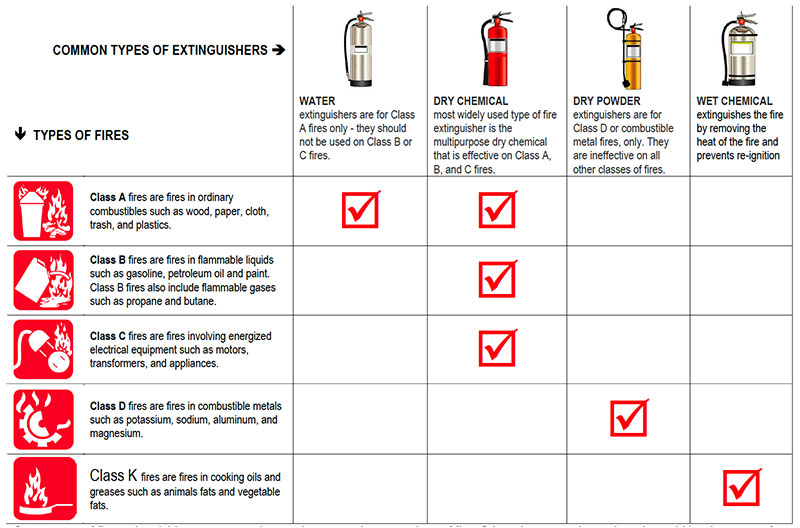Summer houses are open, yearly residences are ready for guests and boats are launched in anticipation of a wonderful summer here on Lake George; “The Queen of American Lakes’. Of course we all want an enjoyable summer but a safe one as well, including any harm or damage as a result of a fire. For that reason it’s important to know about the type of fire we may encounter, the proper response to that fire – always call 911 first – and the equipment and method to control small household or boating fires.
The Fire Equipment Manufacturers’ Association website provides comprehensive information that we have summarized below with thanks to them. Take a few minutes refresh your knowledge of types of fires as well as the proper extinguisher to use and how to use it. To view the FEMA website, click here: www.femalifesafety.org
Not all fires are the same. Different fuels create different fires and require different types of fire extinguishing agents. Common types of household and boating fires and the recommended fire extinguishers are shown here.

Some types of fire extinguishing agents can be used on more than one class of fire. Others have warnings where it would be dangerous for the operator to use a particular fire extinguishing agent. Read and understand the label on your extinguisher and use it accordingly
Whenever confronted with a fire, remember the three A's ; ACTIVATE the any alarm system or notify the fire department by calling 911. Or, have someone else do this for you. ASSIST any persons in immediate danger, or those incapable on their own, to exit the area, without risk to yourself. Only after these two are completed should you ATTEMPT to extinguish the fire.
The fire is small and contained, you are safe from toxic smoke, you have a means of escape and your instincts tell you it's OK. Always call, or have someone call 911 first.
Weather at home or aboard your boat, it’s important to know the locations and the types of extinguishers prior to actually using one.
Fire extinguishers can be heavy, so it's a good idea to practice picking up and holding an extinguisher to get an idea of the weight and feel.
Take time to read the operating instructions and warnings found on the fire extinguisher label. Not all fire extinguishers look alike.
Practice releasing the discharge hose or horn and aiming it at the base of an imagined fire. Do not pull the pin or squeeze the lever. This will break the extinguisher seal and cause it to lose pressure.
When it is time to use the extinguisher on a fire, just remember PASS!
For more information and a visual demonstration, watch this FEMA video.